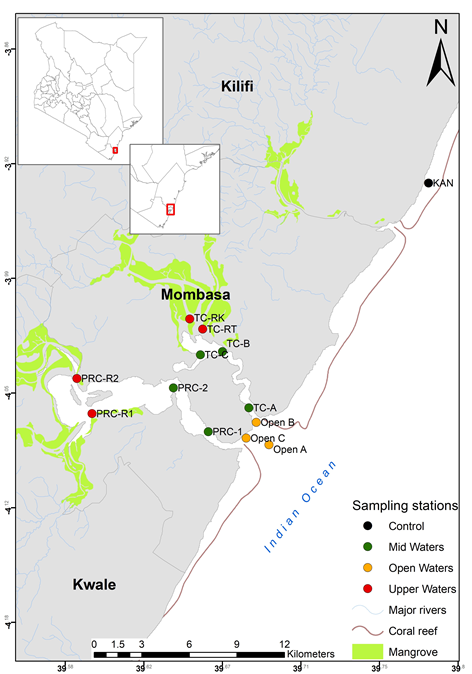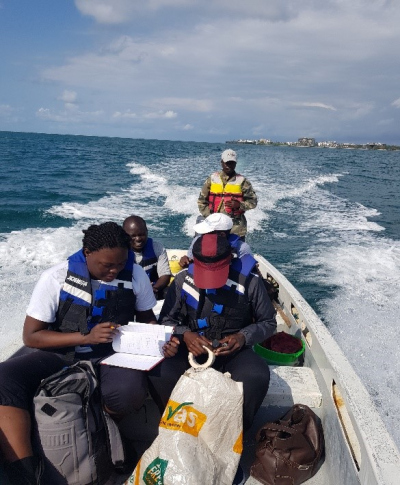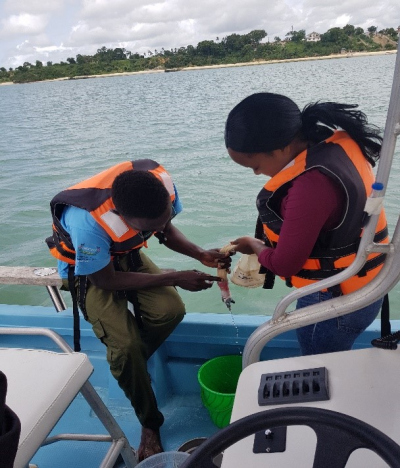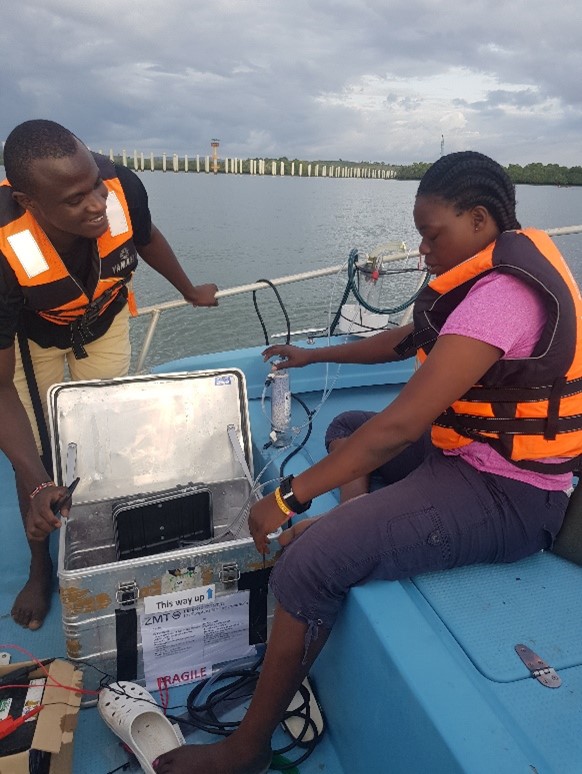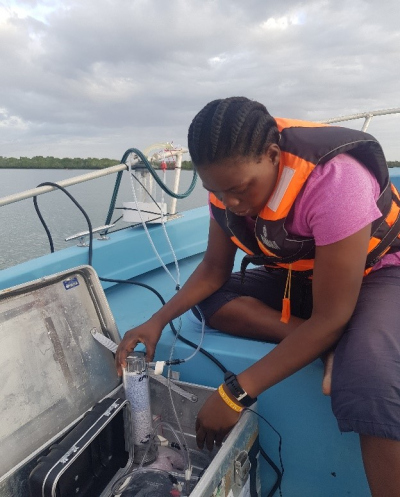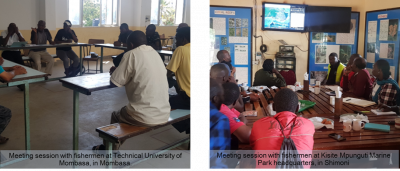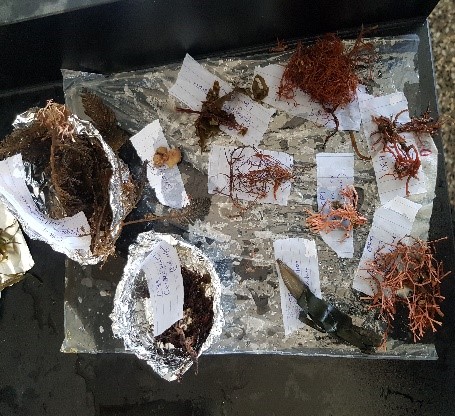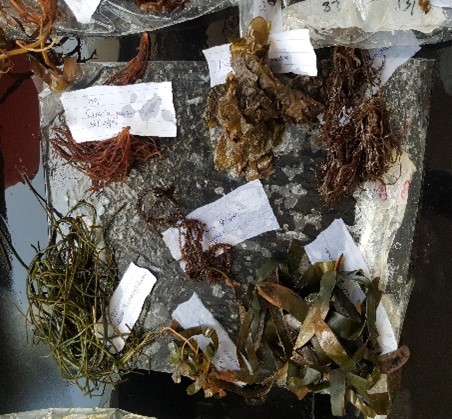- Graduate School GLOMAR
- PhD student reports
- Field Campaigns
- Nancy A. Oduor
Nancy A. Oduor
Report of GLOMAR PhD student Nancy Oduor about her field campaigns in Mombasa, Kenya between January 2021 and October 2022
I started my PhD in October, 2020, after the first wave of the global COVID-19 pandemic. So far, I have conducted three out of the expected four field trips to Mombasa, Kenya, for my doctoral research between January 2021 and October, 2022. The field trips involved a preliminary study and two fieldwork campaigns to collect in situ data and samples and one follow-up program to be conducted in July, 2023. Being originally from Kenya, my travel was not much restricted apart from proof of vaccination and a negative PCR test during all my trips.
Overall, my PhD research in the department of Geology and Biogeochemistry at the Leibniz Center for Tropical Marine Research deals with anthropogenic nutrients dynamics and its influence on harmful algal blooms (HABs) in Mombasa, Kenya. Just like in many other development countries, sewage management is a big problem with most of the domestic and municipal sewage released to the environment untreated. This coupled with extensive use of artificial fertilizers in river catchment areas, and increasing temperatures pose the risk of HABs development in the Kenya’s coastal marine waters. This can in turn affect the coastal economies and human safety if not earlier managed. For this reason, my research aims to establish nutrient sources and pathways and HABs dynamics along the coast of Kenya.
The field work activities involved:
Preliminary study
This was conducted for a period of 8 weeks, between January to end of February 2021. During this time, I met with my field supervisors to discuss the requirements of the fieldwork including permits, field sampling equipment and human resource, and potential sampling sites. We then then set up a taskforce at Kenya Marine and Fisheries Research Institute (KMFRI) including two technologists (biology and Chemistry labs) one scientist to coordinate the fieldwork especially the monthly sampling that needed to be done when I am back in Germany. After the formation of the team, a preliminary survey was conducted to establish the best sampling points for mapping purposes.
Field sampling and data collection Field Trips
The first field trip was conducted for a period of 10 weeks between 24th August and 15th October, 2021. A total of 17 days field surveys was conducted in 85 sites in Mombasa and other ecologically important, turtle foraging sites in selected sites along 240km of the Kenyan coast. The work involved collecting in situ data on physicochemical parameters and water samples for inorganic nutrients (N, P and Si) and phytoplankton laboratory analysis. Additionally, Chl a, sediments and macro-algae samples were collected for primary production, POM, and C and N stable isotope analysis respectively. The work was done with the help of the earlier established taskforce.
The second field trip activities were similar to that of the first trip. It involved collecting data and samples during the rainy season to establish influence of land-based activities on the marine environment. I however got the opportunity to travel with my colleague Kay Davis, a Post-Doc in my working group, who is specialized in the radium tracer machine to help with the assessment of submarine ground water discharge-SGD in Mombasa.
All the samples collected were stored at KMFRI and later prepared for transport to ZMT labs. Apart from the PhD related field work, I spent some valuable time with my family, student mentees and local collaborators through our sea turtle and marine conservation project that I started before starting my PhD. I also gave some of my student mentees opportunity to join my field surveys to get the practical experience.
Back in Bremen, I am now in the ZMT chemistry laboratory analyzing the collected samples. My next, and the last planned fieldtrip is basically for sharing the research findings with the locals, to be with family members and bring back remaining fieldwork materials to Germany since they could not be transported together with the samples.
I am grateful to Deutscher Akademischer Austauschdienst (DAAD), Western Indian Ocean Marine Science Association Marine Research Grant (WIOMSA_MARG) and ZMT for the financial support, KMFRI for the support (field equipment and lab space).




